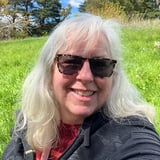Summary
One of the strongest ways of making sure your customer experiences are accessible is to broaden the definition of accessibility for everyone at your organisation. Here are practical steps to make it happen, from visual and interaction design to content and code. Expose how some interpretations of a11y should be exceeded and practical steps to learn about accessibility as a topic. Real product stories relating to accessibility. Understand how design, content, and code work together to make accessible experiences that are better for all customers.
Key Insights
-
•
ADA’s Title III has no explicit web law but courts apply it unevenly to websites, creating legal ambiguity for companies.
-
•
WCAG 2.1 AA is the de facto standard for accessibility but does not cover native mobile apps.
-
•
Accessibility cannot rely on compliance alone; user experience must consider real situational contexts.
-
•
Situational use cases reveal needs beyond disabilities, such as multitasking parents or users in noisy environments.
-
•
Designing for largest possible audience includes people with temporary or situational impairments, not only permanent disabilities.
-
•
Compass found UI touch targets poorly positioned for natural thumb reach, impacting usability for on-the-go users like Olivia.
-
•
Users like John, in non-ideal lighting or environments, need flexible font sizes and contrast adjustments beyond default designs.
-
•
Embedding accessibility guidelines into design systems ensures consistent, scalable implementation across products.
-
•
Accessibility education and ongoing training across design, product, and engineering teams is critical to progress.
-
•
Manual accessibility QA involving people with disabilities complements automated checks to catch nuanced issues.
Notable Quotes
"There is actually no law for private entities in the US that mandates web accessibility."
"WCAG does not apply to native mobile apps, which is how slow progress can be on this topic."
"Situational use cases help us consider the realities outside the business problem that impact user success."
"Olivia isn’t disabled, she’s just in a situation that makes accessibility critical."
"Designing for the largest audience possible means including people with temporary or situational impairments."
"Compliance is not enough; we need to go beyond minimum legal requirements for true accessibility."
"Making accessibility a shared activity turns it into a team effort, involving co-workers, stakeholders, and customers."
"Accessibility education embedded in onboarding and ongoing training builds organizational muscle."
"Automated tests only get you so far; manual QA by people aware of accessibility needs is essential."
"We are evolving our design system to incorporate accessibility guidelines consistently as a foundational practice."
Or choose a question:
















More Videos

"Our shift is structural, not because of personalities — it was needed to influence earlier, more business-centric decisions."
Nalini KotamrajuResearch After UX
March 25, 2024

"Don't be a pot plant, be a crab."
Dean BroadleyNot Black Enough to be White
January 8, 2024

"I appreciate your allyship when I'm in the room, but I appreciate it more when I'm not in the room."
Denise Jacobs Nancy Douyon Renee Reid Lisa WelchmanInteractive Keynote: Social Change by Design
January 8, 2024

"What does ‘best work’ mean? It’s different for everyone, so our solutions have to be flexible and meaningful."
Kim Fellman CohenMeasuring the Designer Experience
October 23, 2019

"What is design’s relationship to power and privilege? Which humans do we center when we say human-centered design?"
George AyeThat Quiet Little Voice: When Design and Ethics Collide
November 16, 2022

"Sometimes alignment work isn’t enjoyable, but it’s part of the job for design system success."
Nathan CurtisBeyond the Toolkit: Spreading a System Across People & Products
June 9, 2016

"If agents do well, we do well. The more we know about you, the more we can make you better or fulfill your goals and aspirations."
Greg PetroffThe Compass Mission
March 10, 2021

"Remote research methods can cast a wider net, but some briefs still require on-the-ground presence."
Chloe Amos-EdkinsA Cultural Approach: Research in the Context of Glocalisation
March 27, 2023

"We brought all the user journeys together with UX designers, content designers, product owners — it wasn’t just analytics and research in isolation."
Mackenzie Cockram Sara Branco Cunha Ian FranklinIntegrating Qualitative and Quantitative Research from Discovery to Live
December 16, 2022


















